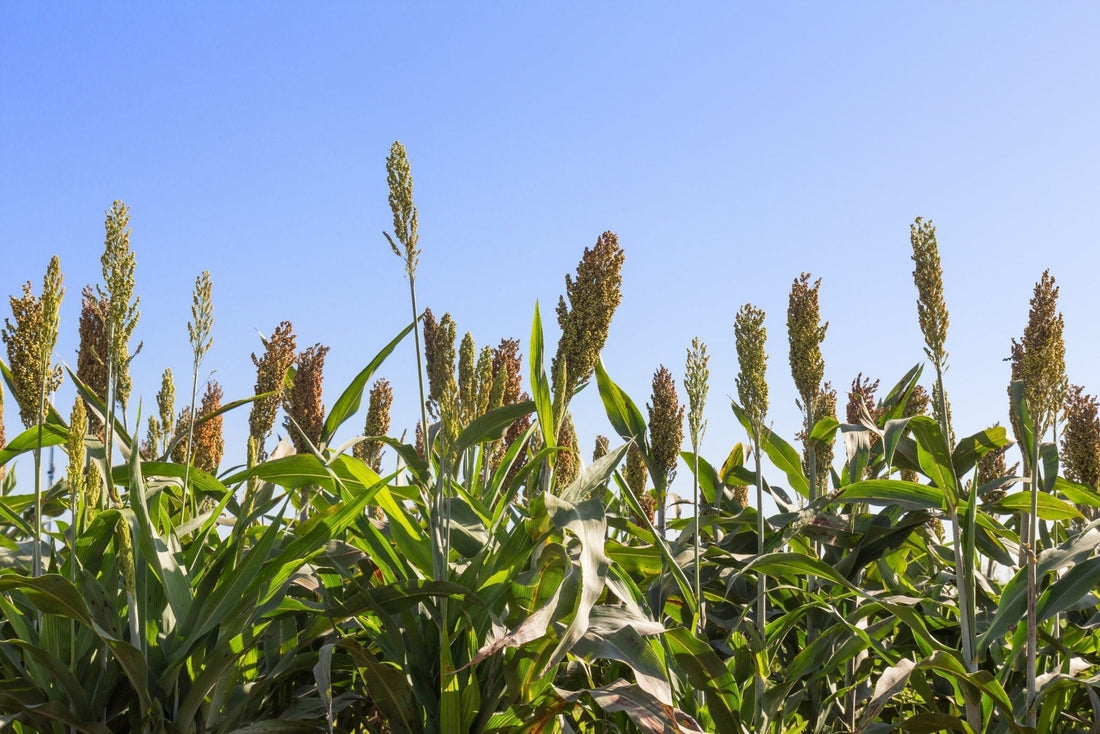
Have You Heard of the Nutritional Benefits of Bajra?
Bajra, or the pearl millet, came to India from Africa in about 2000 BC and has been a major part of our diet since then. It is a staple in most Indian households and is also known as, kambu in Tamil, sajjalu in Telugu, and bajri in Gujarati. Also called pearl millet, bajra serves as a staple for a majority of the Indian population. Bajra flour is prepared by grinding these seeds and is used to prepare fluffy, healthy and delicious rotis. A variety of dishes are prepared considering the gazillion bajra flour benefits that exist.
Nutritional Composition of Bajra
Do you also wonder if bajra is good for your health or not? Well, we often have heard from nutritionists that bajra is a powerhouse of proteins and nutrition. Here’s a breakup of what amount of nutrition you’ll get for every 100 grams of bajra that you consume.
Source: Lybrate
Energy: 361 Kcal
Carbohydrates: 67gms
Protein: 11 gms
Fat: 5 gms
Minerals: 2gm
Fibre: 1gm
Calcium 42gms
Phosphorus: 296 gms
Iron: 8mg
Nutritional Benefits of Bajra
From skin to health to eliminating the risks of various deadly diseases, bajra is a powerhouse of nutrients that helps in almost everything.
1. Aids Digestion
- Bajra is a rich source of insoluble fibre. These insoluble fibres keep your digestive health in check. They also work as a prebiotic for our gut. As these fibres add satiety, it leads to overeating junk food as well as keeping your weight in check. This way consuming bajra prevents constipation, regulates bowel cleansing, keeps your gut health in check and aids digestion.
2. Prevents Cancer
- Based on research it is observed that the phytochemicals and polyphenols as well as fibres present in bajra possess anti-cancerous properties and help in preventing breast cancer. If you consume just 30 grams of bajra every day, the chances of developing breast cancer reduce by 50%. With the increasing number of breast cancer cases, consuming bajra on a daily basis can prove to be a great benefit.
3. Helps in Managing Diabetes
- It might be a bit hard to believe but consuming millet has lowered the chances of getting diabetes by 30%. Bajra is rich in magnesium and it helps in controlling the glucose receptors and managing your diabetic levels.
4. Prevents Anemia
- Bajra is a rich source of iron and phosphorus. While suffering from anaemia, the iron levels of an individual decrease and a person might feel weak and exhausted due to a lack of oxygen. That’s why consuming bajra can be of great help in preventing anaemia.
5. Maintains a Healthy Heart
- Bajra has a high amount of magnesium. This magnesium works well to eliminate the risk of cardiovascular diseases such as diabetes and blood pressure. This also provides protection against stroke and leaves us with a fit and healthy heart. Adding to that, bajra is full of omega-3 fatty acids. So it helps in regulating the heart rhythms and is also known as cardio-protective.
6. Helps in Managing Weight
- A very common question that pops up is that bajra increases weight. As bajra is full of complex carbs, it offers higher satiety levels. It also gets absorbed slowly in the digestive tract. It also ensures a continuous flow of energy and prevents us from overeating and eating at uneven times.
7. A Gluten-free Alternative
- People who wish to opt for a gluten-free diet often struggle in finding good alternatives. Hence, bajra turns out to be a saviour ss a gluten-free alternative to wheat.
8. Helps in Lowering Cholesterol
- We all have established the fact that bajra is extremely high in fibres, which helps in reducing the bad cholesterol levels(LDL) and increase the effects of good cholesterol(HDL).
9. Alkaline Nature
- At times consuming high-spice food or junk food leads to rising acidic levels in the body. As bajra is alkaline in nature, it helps in combating acidity and prevents the harm it causes to our bodies.
10. Excellent for Skin
- The high zinc constituent in bajra slows down the ageing process of the skin and also repairs the skin. The presence of Vitamin A makes it excellent for eye care and Vitamin B9 helps to produce new blood cells.
Different Ways to Consume Bajra
Knowing the endless benefits of Bajra, here we have listed a few interesting recipes to try out.
- Whole Bajra: You can consume Bajra entirely similar to rice. You can wash it, soak it for 4 hours and use it as a salad or khichdi in your daily diet.
- Rotis or Flatbreads: A well-known dish of Gujarat, Rotis or rotlas are made from bajra flour that tastes delicious.
- Sprouted Bajras: Sprouted bajras are extremely nutritious and wonderful for enhancing immunity. This process makes them easily digestible and the best way is to consume them as a salad.
-
Fermented Bajras: Fermented bajras are equivalent to good health and also enhance your gut health. We can make chillas from Bajras flour by combining them with other organic flour.
Bajra wasn’t acknowledged well earlier, but for a few years the benefits are being recognized and people have started replacing the wheat rotis with organic bajra flour rotis. At Girveda, we are committed to nourishing society with a supply of pure, chemical-free, 100% Natural Food and Ayurvedic Products, cultivated in the fertile lands of Gir. Bajra flour is extracted from the bajra seeds at Girveda that are 100% naturally grown using Cow Based Natural Farming, or CBNF. You can get your pack of bajra flour and try some amazing healthy recipes.